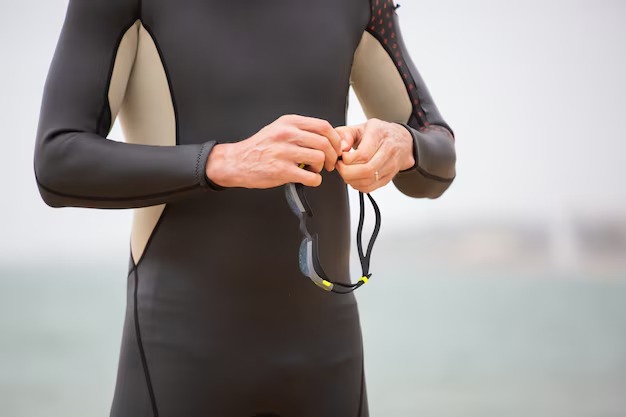When it comes to water sports, the right gear makes all the difference. A men’s wetsuit is more than just a piece of clothing—it provides insulation, protection, and flexibility, ensuring that every session in the ocean is safe and enjoyable. Whether you are chasing waves on your surfboard or exploring the depths of the sea with scuba gear, choosing the right wetsuit requires an understanding of design, material, and fit. This guide will walk you through the essentials to help you make an informed choice.
Understanding Wetsuit Materials
Neoprene, a synthetic rubber that is known for being very good at keeping heat in, is used to make most wetsuits. The thickness of neoprene plays a critical role in how warm the wetsuit will keep you. Thicker neoprene offers greater warmth but can restrict flexibility, which is why divers in colder waters often opt for thicker suits, while surfers in moderate climates may prefer lighter, more flexible ones. Many modern wetsuits also incorporate advanced linings that dry faster and retain heat more efficiently, giving you both comfort and performance.
Choosing the Right Style
Wetsuits come in various styles, from full suits that cover the entire body to spring suits that end at the knees or elbows. For those who need specific protection, wetsuit pants are a versatile option. They can be paired with a wetsuit jacket or rash guard, giving surfers and divers flexibility in how much coverage they want, depending on the water temperature. Wetsuit pants are especially popular among paddlers and divers who want core and leg insulation while keeping their upper body free for mobility.
Fit and Comfort
A swimmer should fit close to your body but not make it hard to move. If it’s too open, water will flow through it and make it less useful. If the fit is too tight, it will be hard to breathe or swim. The size guides that the company gives you are very important. Also, try on the wetsuit before you buy it if you can. Features such as seamless underarms, adjustable neck closures, and ergonomic panel designs can significantly enhance comfort during long hours in the water.
Thickness and Water Temperature
Water temperature is the single most important factor when deciding on wetsuit thickness. For warm waters above 22°C, a 2mm spring suit or wetsuit pants with a thin top might be sufficient. In temperate conditions between 15°C and 21°C, a 3/2mm fullsuit is a popular choice, providing enough warmth without sacrificing flexibility. For colder waters below 15°C, thicker 5/4mm or even 7mm wetsuits are necessary, sometimes with built-in hoods, gloves, and boots. Matching your wetsuit to the environment ensures comfort and safety.
Features Worth Considering
Modern wetsuits come with a range of added features that enhance performance:
- Zipper placement: Back zips are easy to get into, while chest zips provide better water sealing and flexibility.
- Seam construction: Flatlock stitching works for warm water suits, but glued and blind-stitched seams are better for colder conditions as they minimise water entry.
- Reinforcements: Kneepads and reinforced panels add durability, especially important for surfers who spend time kneeling on boards.
Final Thoughts
A men’s wetsuit is a vital investment for anyone passionate about water sports. By considering materials, style, fit, thickness, and added features, you can find the suit that perfectly matches your needs. From the practicality of wetsuit pants to the warmth of full-body suits, the right choice ensures that you stay comfortable, protected, and ready for every wave or dive.





























